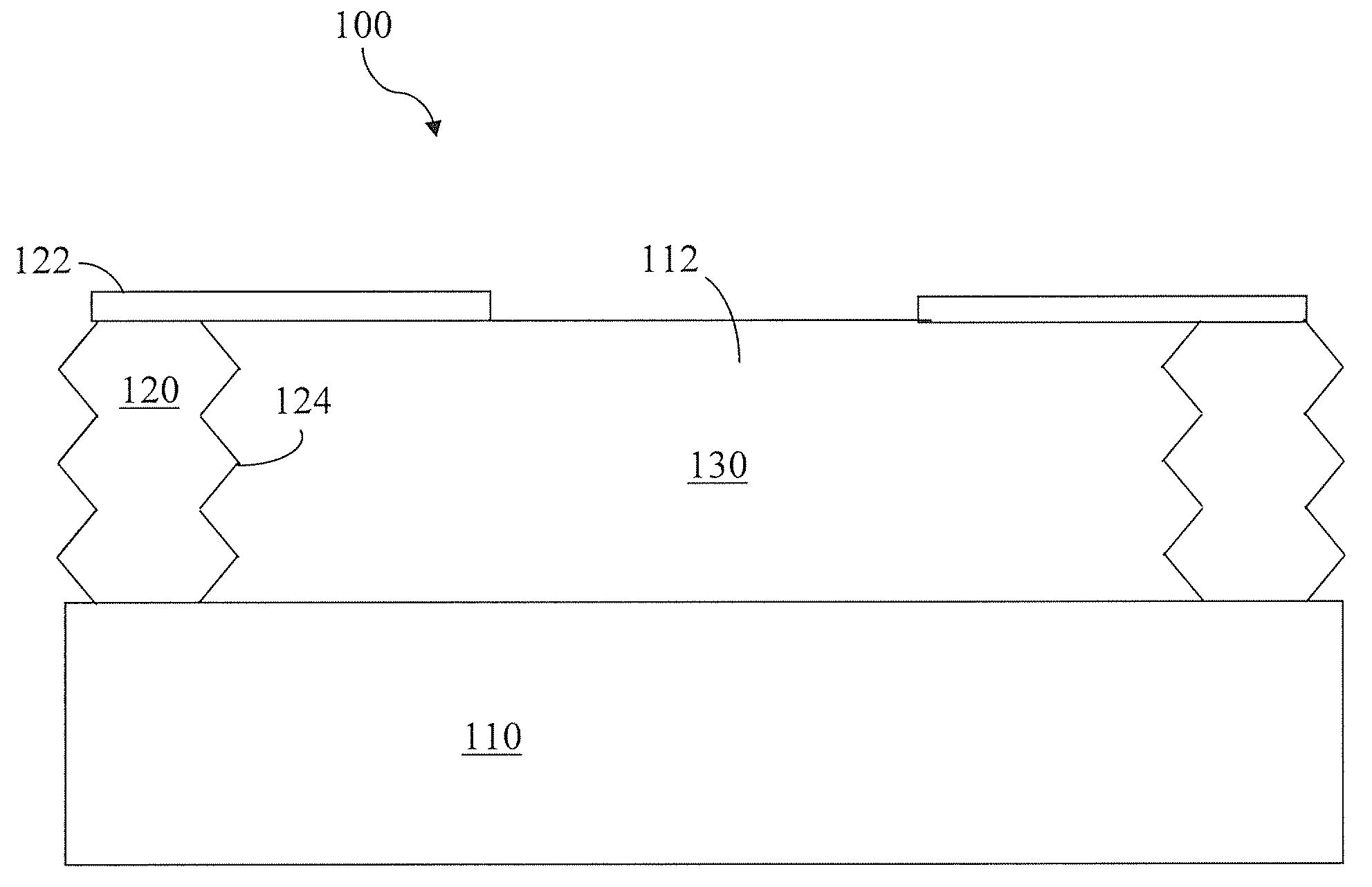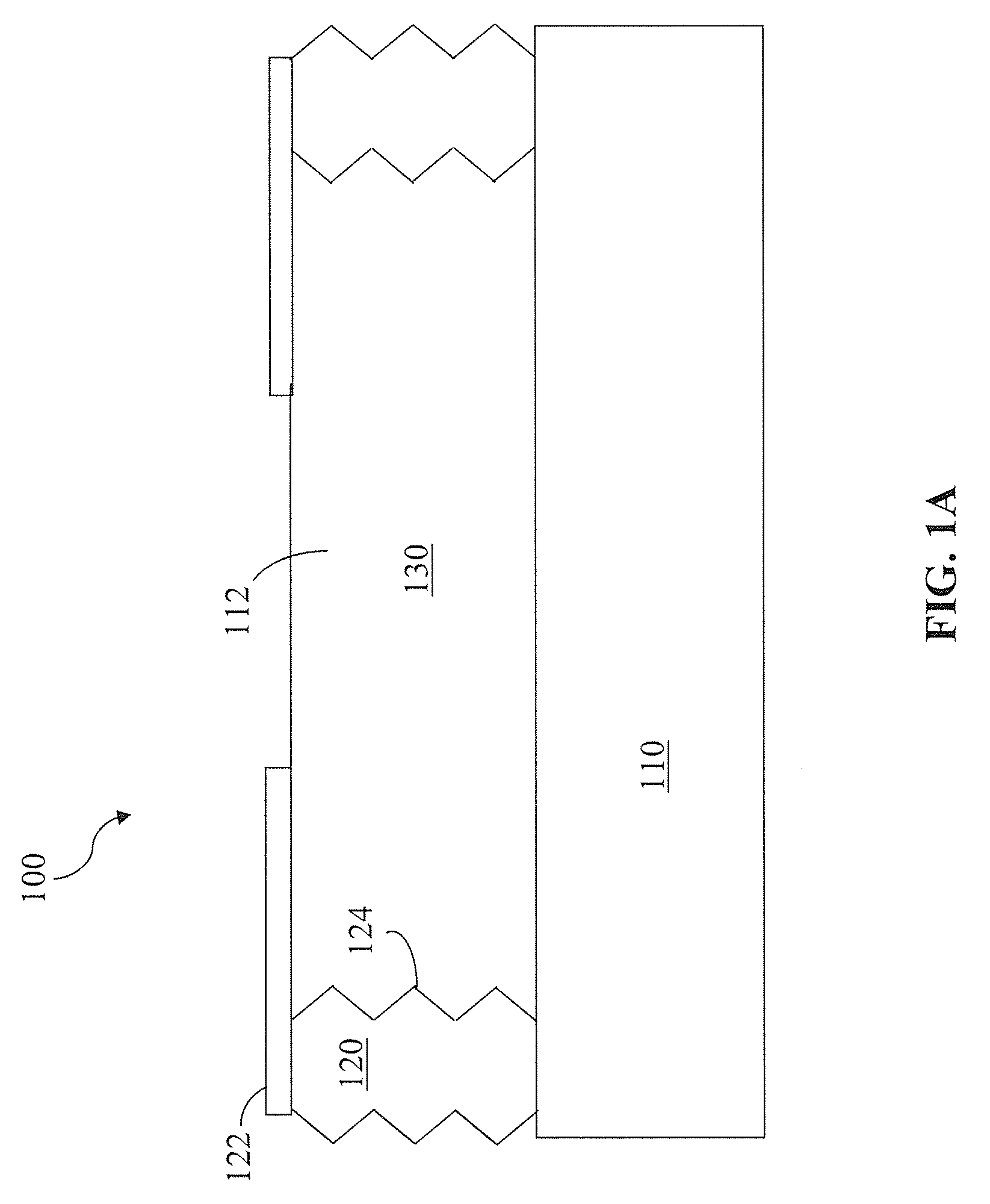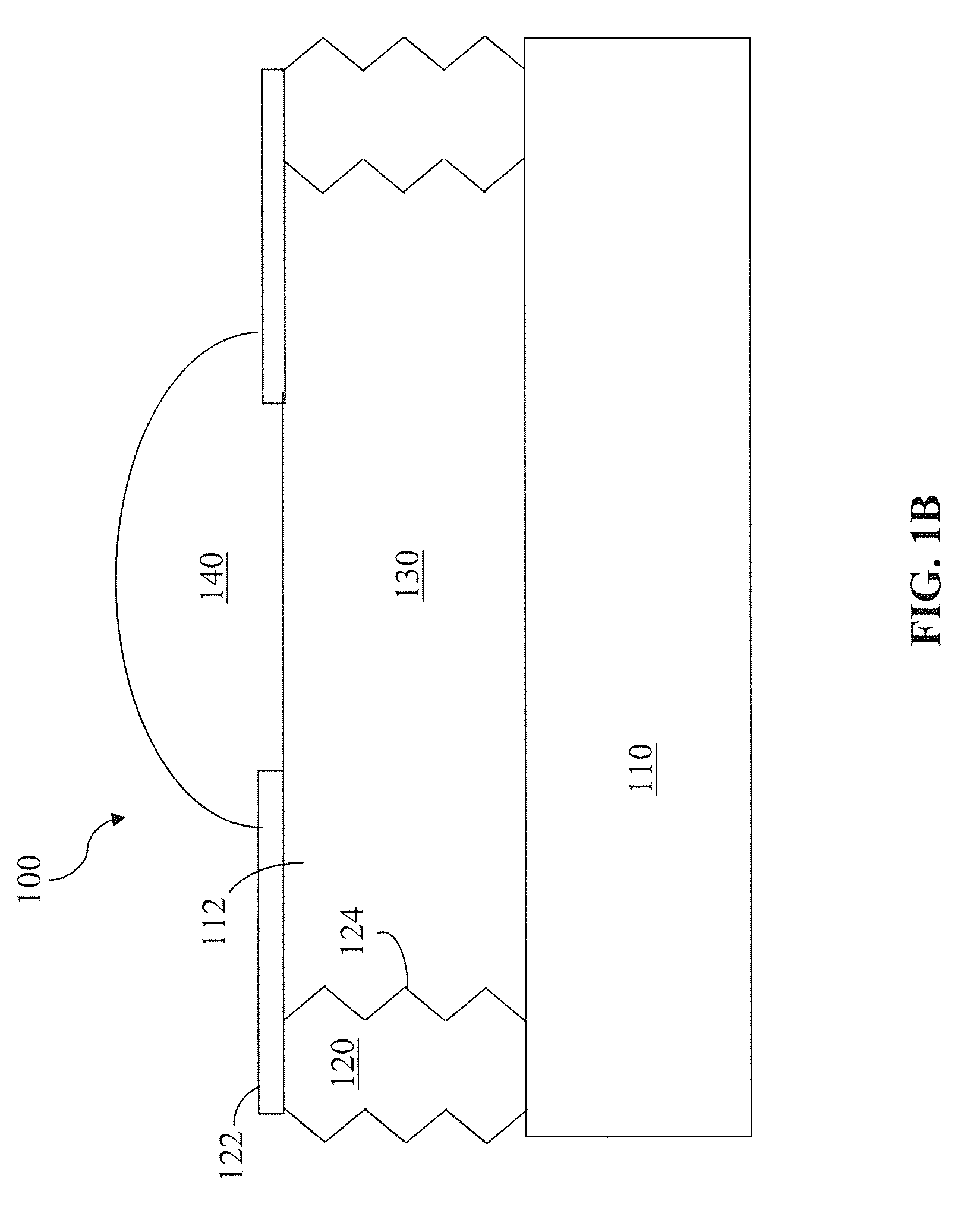Wafer level lens replication on micro-electrical-mechanical systems
a micro-electrical-mechanical system and lens technology, applied in the field of forming wafer-level lenses, can solve the problems of complex and expensive possible techniques for joining lenses to associated mems structures
- Summary
- Abstract
- Description
- Claims
- Application Information
AI Technical Summary
Benefits of technology
Problems solved by technology
Method used
Image
Examples
Embodiment Construction
[0026]In the following detailed description, reference is made to various embodiments that are described with sufficient detail to enable those skilled in the art to practice them. It is to be understood that other embodiments may be employed, and that various structural or logical changes may be made.
[0027]Embodiments described herein relate to a method of making wafer level integrated lens / MEMS structures by forming wafer-level lenses on wafer level MEMS structures. The integrated wafer level structure can then be further integrated with an imager wafer to form a plurality of imaging devices, which are diced from the wafer to form individual imaging devices having integrated lenses and MEMS structures. The embodiments described herein provide a high-throughput wafer level process that will result in smaller, more reliable, and easier to produce autofocus and zoom systems.
[0028]Now referring to the figures, where like reference numbers designate like elements, FIGS. 1A-1D show an e...
PUM
 Login to View More
Login to View More Abstract
Description
Claims
Application Information
 Login to View More
Login to View More - R&D
- Intellectual Property
- Life Sciences
- Materials
- Tech Scout
- Unparalleled Data Quality
- Higher Quality Content
- 60% Fewer Hallucinations
Browse by: Latest US Patents, China's latest patents, Technical Efficacy Thesaurus, Application Domain, Technology Topic, Popular Technical Reports.
© 2025 PatSnap. All rights reserved.Legal|Privacy policy|Modern Slavery Act Transparency Statement|Sitemap|About US| Contact US: help@patsnap.com



